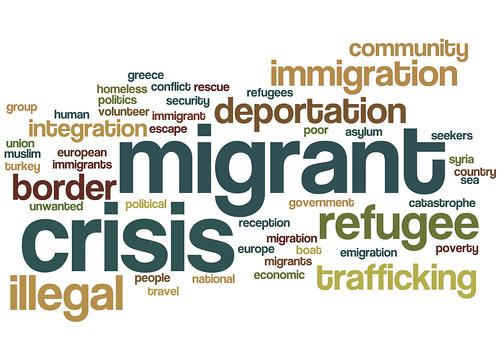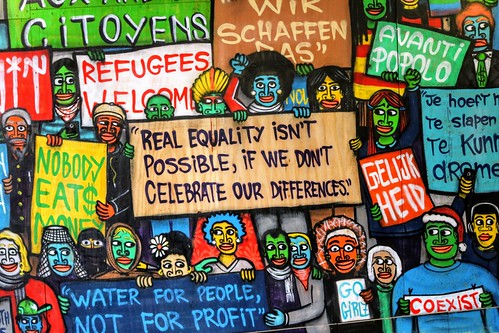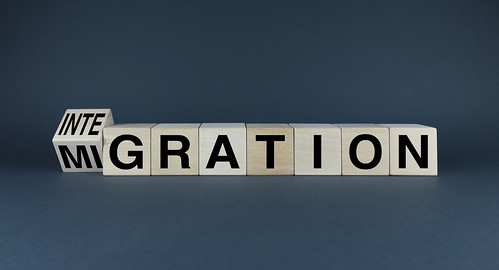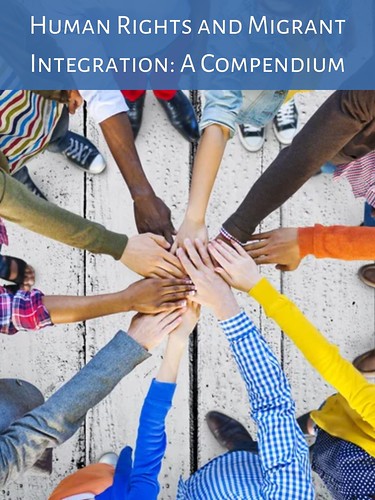In our progressively interconnected world, migration has become an increasingly global occurrence. People move across borders for a multitude of reasons, such as seeking economic opportunities, escaping conflict or persecution, or to simply build a better life. This exponential increase of migrants across the globe has resulted in countries needing to tackle the complex task of migrant integration—a complicated process which considers economic, cultural, social, and legal measurements.

To be a child of 5 years old and fleeing your home from persecution and conflict in countries such as Afghanistan and Syria is an extremely difficult experience. To have to endure a long journey to either cross the channel on a rubber boat, or live in Calais as a young person, is only the start of countless challenges faced. Once arriving in a new, unfamiliar country, you are then forced to learn a new language, eat different food, and acclimate to a new education system. It can be extraordinarily challenging to understand how to adjust, integrate, and thrive.
This article, the first in a series, will introduce the concept of migrant integration, the challenges faced, the progress made so far, and the connection it has to human rights.

Defining Migrant Integration
Migrant integration refers to the process migrants face in a host country to blend in with the rest of its society.
Who is a migrant?
They can range from refugees, asylum seekers, or economic migrants trying to integrate into their host country. Newcomers face the responsibility of adapting to the host’s culture, while the host country must adjust to accommodate and welcome diversity brought in from migrants.
If successful, such integration creates a cohesive and inclusive society where migrants find themselves to be treated similarly with those from their host country, as equal access to rights, resources, and opportunities are available regardless of one’s country of origin.
However, it is crucial to note that a one-size-fits-all process is not possible when it comes to migrant integration. This is because each country has its own specific policies, cultural contexts, and circumstances which must be kept in mind.
By fostering social cohesion, cultural enrichment, economic growth, and overall harmony, this offers great success to address the challenges and opportunities presented by global migration trends and migrant integration.

Challenges Faced in Migrant Integration
As mentioned, this complex process involves migrants adapting to the host country’s society in order to fit in. However, it comes with many challenges, mainly due to the connection that socio-economic factors have to migrants integrating in their host country. Just a few of these factors include social inclusion, education, and employment.
A lack of social inclusion is especially difficult for migrants, as this particularly intertwines with the education and employment. Building meaningful social relationships and acquiring a sense of belonging in a new country can be really tricky, especially when the social norms and customs are significantly different to that of their home country.
The main cause of this could be due to the lack of social support network that migrants have when they first arrive in a new country. This leads to feelings of isolation and loneliness, often resulting in a hindrance of integration efforts. Additionally, language and cultural differences can cause for communication and social barriers, meaning migrants may find it a struggle access services such as healthcare, find employment, or engage in social interactions with locals.
On top of these challenges, migrants also find themselves struggling to maintain their cultural identity and values while adapting to a new culture. They find themselves fighting an internal battle of wanting to preserve their cultural heritage while needing to integrate into the host culture. Cultural identity and new culture scrapes only the surface of the challenges migrants face on a daily basis when trying to integrate into their host country. If a migrant does not find a way to integrate socially and linguistically, they will find that certain resources, such as education and employment, become increasingly difficult to obtain.
Language is a fundamental barrier to education for many migrant children. This can cause a challenge to understand lessons, communicate with teachers and fellow pupils, and complete assignments to an acceptable standard. To add to this, differences in education systems and grading standards can also lead to gaps in knowledge and skills; having to repeat year groups or courses can cause migrant pupils to feel demotivated, unwelcome, and left behind. These are just a handful of challenges migrants face in schools. Creating a more inclusive and welcoming school environment can give migrant children the opportunity to thrive in their host country.
Many migrants and refugees experience the Refugee Entry Effect in their host countries. This effect outlines that native business owners are less likely to employ migrants of different culture due to the absence of work experience in their host country, limited language skills, and lack of recognition for the migrants’ home country qualifications. This has a detrimental, compounding effect, as migrants are most likely to start at lower levels in their field compared to what they would be used to in their home country. Due to low income, less acknowledgement of qualifications, and language barriers, migrants can face a lack of access to affordable housing and social services. This extends social and economic inequality for migrants in their host country…which can last for generations.

Progress in Migrant Integration
Despite the significant challenges, many countries and organisations have acknowledged this and have made a meaningful effort in aiding migrant integration.
Nations such as the Netherlands have offered a special newcomer’s class for migrant children between the ages of 6 and 12 years old. This is part of the New Civic Integration Act of 2021, which offers migrants the opportunity to learn Dutch at a B1 level or higher, and provides them with preparation for either secondary education at either secondary vocational level, professional, academic level, or for employment. Migrants in the Netherlands have from the start an opportunity to integrate and build a future in their host country.
Another inclusive governmental policy is the New Scots Integration Strategy introduced by the Scottish Government. The main objective of this strategy is to ensure that migrants and asylum seekers arriving in Scotland are welcomed and supported to rebuild their lives, become active members of their communities, and contribute to Scottish society. It emphasizes early integration for migrants and refugees with access to housing, education, healthcare, and employment opportunities. This integration strategy offers the promotion of active participation and representation of migrants and refugees in decision-making processes that directly affect their lives.
Initiatives like these offer migrants the opportunity to integrate into their host country with the aid they may require in doing so.
Migrant integration is a multifaced process which plays a vital role in shaping modern societies and allowing migrants to create a life in a new country.
Through addressing the challenges faced through these type of integration policies introduced by the governments of host countries, societies offer a more rightful future for everyone.

Please click the photo below to read more articles in this series:
Esmee Johnston is the Human Rights and Migrant Integration Editor at Wandering Educators. Motivated by the desire to make a positive impact in the world, is currently studying her master’s degree in Human Rights and Diplomacy at the University of Stirling. This degree is taught in partnership with UNITAR, offering the opportunity for her to broaden her knowledge on human rights matters. She is very passionate about the human rights of migrants and the importance migrant integration has on this topic.


